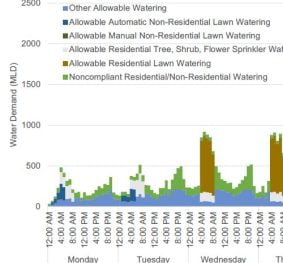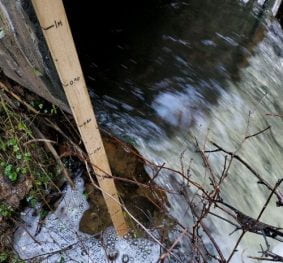
Greater Victoria pH & Corrosion Study

Project Highlights
The Greater Victoria Drinking Water System (GVDWS) supplies treated water from the Sooke Lake Reservoir through the Capital Regional District (CRD) transmission system to several regional municipal distribution systems.
The treated water is of neutral pH and very soft, allowing lead and copper to leach into the water if present in distribution and domestic plumbing systems.
The CRD and project partners (District of Saanich, City of Victoria, District of Oak Bay) undertook this study to understand the water’s potential to dissolve lead and copper, as well as to assess geographical risks on the public side (across the distribution network) and private side (in private homes and businesses).
For the public side of the project, distribution system materials and water age were mapped and overlaid with data collected about measured lead and copper concentrations and water corrosivity (as measured based on the calcium carbonate precipitation potential (CCPP) index. In addition, a pipe corrosion index (PCI) was also developed to predict lead presence in the water based on pipe age/material, water corrosivity, pipe contact, and nearby measured lead concentrations.
The water across the GVDWS was generally passive, with some areas suggesting mildly corrosive or corrosive conditions. Lead and copper levels were relatively low throughout the distribution system, and where elevated lead concentrations above the MAC (i.e., >5 µg/L) were measured, they were confirmed to result from pipes and fittings within the sampling stations not an indication of lead in the distribution system.
Over 100 private side locations were sampled for lead and copper using First Draw and 30-minute stagnation (30MS) protocols. Only one site had a lead concentration over the First Draw action limit (15 µg/L), and the same site had a 30MS lead concentration over the Health Canada MAC (5 µg/L). The homeowner with the high lead concentrations was notified and advised on corrective actions. In addition, four potential lead service lines were identified via participant surveys, and the relevant municipalities were notified.
Overall, the study found that lead and copper concentrations system-wide are typically well below the current health limits, meaning no community-level health concern is associated with lead concentrations in tap water. Accordingly, system-wide corrosion control treatment was found to not be required.
Key Contact(s)
Ryan Lesyshen Community Infrastructure & Development Sector Leader
Siobhan Robinson Water Supply & Treatment Sector Leader







